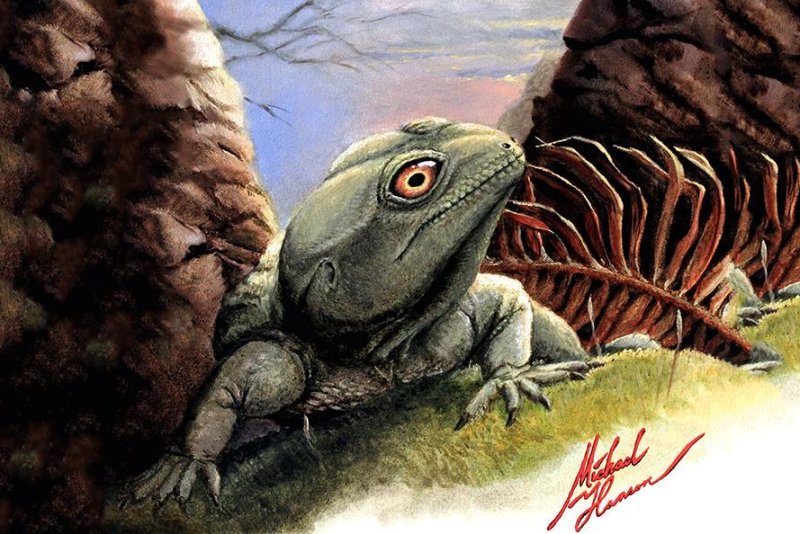An artistic rendering showcases the impressive mouth of the big-jawed Triassic reptile. Photo by Michael Hanson/Yale
March 23 (UPI) -- Some 200 million years ago, what's now Connecticut was home to a massive-mouthed reptile. According to new research published in the journal Nature Communications, the jaws of Colobops noviportensis were much larger than those of other reptiles from the Triassic.
Even compared to today's diversity of reptiles, the ancient lizard-like species boasted an impressively large bite -- especially considering the reptile' small size.
"Colobops would have been a diminutive but plucky little beast, part of a little-known menagerie of small animals that lived among the first dinosaurs," Bhart-Anjan Bhullar, assistant professor and assistant curator in geology and geophysics at Yale University, said in a news release. "Despite its lizard-like aspect, it is in fact an early branch-off of the lineage leading to dinosaurs and birds."
In addition to being unusually large, the species bite was also quite powerful -- much more powerful than the bites of its closest relatives. The powerful jaws likely allowed Colobops to feed on armored prey too tough to be consumed by other small predators.
The remains of the newly named species were first discovered in the 1960s. The fossilized skull spent most of the last half-century at the Yale Peabody Museum of Natural History. The quarter-sized fossil wasn't analyzed in-depth until the 1990s, when it was misidentified as the close relative of a modern lizard-like reptile called a tuatara.
Most recently, a combination of CT scans and 3D modeling revealed the fossil skull to be unlike any known reptiles from the Triassic period. The newly identified species' name is a reference to a Latinized version of New Haven, "novus portus." The Colobops noviportensis skull was recovered from the New Haven Arkose geological formation in Meriden, Conn.
The new research proves small species had begun experiment extreme anatomical adaptations as early as 200 million years ago.
"Comparisons with modern reptile dissections showed that it had incredibly well-developed jaw muscles for its size, suggesting an exceptional bite, even compared to the diversity of modern reptiles," said Adam Pritchard, a former Yale researcher, now at the Smithsonian Institution. "It's a great illustration of the critical importance of fossils big and small for understanding the diversity of organisms."















